
99
Tạp chí Y Dược học - Trường Đại học Y Dược Huế - Tập 9, số 2 - tháng 4/2019
Địa chỉ liên hệ: Phan Anh Chi, email: anchitogether@gmail.com
Ngày nhận bài: 9/2/2019, Ngày đồng ý đăng: 11/4/2019; Ngày xuất bản: 25/4/2019
SO SÁNH VI KẼ VÙNG CHÓP RĂNG KHÔ
GIỮA KỸ THUẬT TRÁM BÍT ỐNG TỦY MỘT CÔN VÀ LÈN DỌC
VỚI MỘT SỐ LOẠI XI MĂNG
Huỳnh Thị Ngọc Giang, Phan Anh chi
Khoa răng Hàm Mặt, Trường Đại học Y Dược, Đại học Huế
Đặt vấn đề: Sự hiện diện của vi kẽ gây nên thất bại trong điều trị nội nha. Một đặc tính quan trọng của xi
măng nội nha là khả năng dán dính. Mục đích của nghiên cứu này nhằm so sánh vi kẽ của răng được trám bít
ống tủy bằng kĩ thuật một côn và lèn dọc với ba loại xi măng trám bít khác nhau (Cortisomol, AH Plus, Apexit
Plus). Đối tượng và phương pháp nghiên cứu: 60 răng cối nhỏ hàm dưới đã nhổ của người trưởng thành
được chọn và phân chia ngẫu nhiên thành 6 nhóm (n=10) dựa trên loại xi măng và kĩ thuật trám bít ống tủy:
(A) một côn với Cortisomol, (B) một côn với AH Plus, (C) một côn với Apexit Plus, (D) lèn dọc với Cortisomol,
(E) lèn dọc với AH Plus, (F) lèn dọc với Apexit Plus. Các răng được ngâm trong mực Ấn Độ trong 7 ngày và
làm trong suốt bằng Methyl salicylate. Mức độ thâm nhập phẩm nhuộm được đo ở tất cả các mặt của chân
răng. Kết quả: Chiều dài thâm nhập phẩm nhuộm trung bình khi trám bít ống tủy bằng Cortisomol, AH Plus,
Apexit Plus lần lượt là 0,85, 0,98 và 0,58 mm. Sự khác biệt không có ý nghĩa thống kê (p>0,05); tương tự, độ
thâm nhập phẩm nhuộm khi trám bít bằng kĩ thuật 1 côn và lèn dọc với từng loại xi măng Cortisomol, AH Plus,
Apexit Plus thì sự khác biệt không có ý nghĩa thống kê. Kết luận: Cortisomol, AH Plus, Apexit Plus có hiệu quả
tương tự nhau trong việc ngăn ngừa vi kẽ. Sự khác biệt độ thâm nhập phẩm nhuộm trung bình giữa nhóm
trám bít ống tủy bằng kĩ thuật một côn và lèn dọc không có ý nghĩa thống kê.
Từ khóa: Vi kẽ, một côn, lèn dọc, Cortisomol, AH Plus, Apexit Plus
Abstract
COMPARISON OF APICAL MICROLEAKAGE FOLLOWING
CANAL OBTURATION WITH SINGLE-CONE AND WARM VERTICAL
CONDENSATION TECHNIQUES USING
SOME ROOT CANAL SEALERS
Huynh Thi Ngoc Giang, Phan Chi Anh
Faculty of Odonto-Stomatology, Hue University of Medicine and Pharmacy, Hue University
Microleakage can result in failure of endodontic treatment. An important characteristic of endodontic
sealer is sealing ability. The aim of this experimental study was to compare the apical leakage of teeth
obturated with single-cone and warm vertical condensation techniques using three different sealers
(Cortisomol, AH Plus, Apexit Plus). Materials and Methods: Sixty extracted human lower premolar teeth
were selected and randomly assigned to six groups (n = 10), according to the root canal sealer and technique
used for obturation: (A) Single-cone technique with Cortisomol; (B) Single-cone technique with AH Plus;
(C) Single-cone technique with Apexit Plus; (D) Warm vertical condensation technique with Cortisomol; (E)
Warm vertical condensation technique with AH Plus; (F) Warm vertical condensation technique with Apexit
Plus. The teeth were immersed in India ink for seven days and clarified using methyl salicylate. The extent
of apical dye penetration was measured with a measuroscope in all aspects of the canal. Results: The mean
penetration length of dye in Cortisomol, AH Plus and Apexit Plus samples were 0.85, 0.98 and 0.58 mm,
respectively. The differences between three groups were not significant (p > 0.05); also, the mean dye
penetration in obturating with single-cone and warm vertical condensation techniques using Cortisomol, AH
Plus, Apexit Plus was not significantly different. Conclusion: Cortisomol, AH Plus, Apexit Plus were similarly
effective in prevention of apical microleakage. Differences in the mean dye penetration between the groups
which were obturated with Single-cone and warm vertical condensation were not statistically significant.
Keyword: Microleakage, single-cone, warm vertical condensation, Cortisomol, AH Plus, Apexit Plus
DOI: 10.34071/jmp.2019.2.16

100
Tạp chí Y Dược học - Trường Đại học Y Dược Huế - Tập 9, số 2 - tháng 4/2019
1. ĐẶT VẤN ĐỀ
Với xu thế phát triển của xã hội hiện nay, việc
bảo tồn răng bằng điều trị nội nha thay cho nhổ răng
là hết sức quan trọng, đảm bảo thẩm mĩ, ăn nhai,
tạo lập khớp cắn, kích thích sự phát triển của xương
hàm.
Điều trị nội nha trải qua nhiều giai đoạn, trong đó
giai đoạn cuối cùng là trám bít ống tủy. Nó đóng vai
trò quan trọng trong điều trị nội nha, giúp ngăn chặn
các vi nứt và sự xâm nhập của dịch quanh chóp răng
vào hệ thống ống tủy, ngăn cản sự tái viêm nhiễm và
thiết lập môi trường vi sinh thuận lợi cho quá trình
phục hồi các thương tổn. Để đạt được điều này, việc
trám bít phải đạt được theo 3 chiều của hệ thống
ống tủy.
Sự hiện diện vi kẽ vùng chóp không những phản
ánh kĩ thuật, phương pháp điều trị nội nha mà còn
nói lên hiệu quả của các vật liệu trám bít ống tủy
[6]. Vật liệu trám bít ống tủy thường được sử dụng
là Gutta percha. Tuy nhiên, nó không thể tạo được
gắn kết hiệu quả với ngà răng của thành ống tủy, vì
vậy phải sử dụng kết hợp với xi măng nội nha [2],
[4], [7], [9].
Trên thế giới đã có nhiều nghiên cứu về hiệu quả
trám bít ống tủy của các xi măng nội nha trong các
phương pháp trám bít ống tủy khác nhau. Tại Việt
Nam, các nghiên cứu về hiệu quả trám bít ống tủy
của các xi măng nội nha và các phương pháp trám
bít ống tủy không nhiều.
Để góp phần vào việc đánh giá hiệu quả trám bít
ống tủy của các xi măng nội nha trong các phương
pháp trám bít ống tủy khác nhau, chúng tôi tiến
hành nghiên cứu đề tài: “So sánh vi kẽ vùng chóp
răng khô giữa kỹ thuật trám bít ống tủy một côn và
lèn dọc với các xi măng khác nhau”, với mục tiêu so
sánh vi kẽ vùng chóp răng khô giữa kỹ thuật trám
bít ống tủy một côn và lèn dọc với xi măng nội nha
Cortisomol, Apexit Plus, AH Plus.
2. ĐỐI TƯỢNG VÀ PHƯƠNG PHÁP NGHIÊN CỨU
2.1. Đối tượng
Mẫu nghiên cứu gồm 60 răng cối nhỏ hàm dưới
được lấy từ các răng có chỉ định nhổ trong chỉnh nha
Tiêu chuẩn chọn mẫu
- Răng có một ống tủy
- Chân răng nguyên vẹn, chân răng đã đóng chóp
Tiêu chuẩn loại trừ
- Răng đã được điều trị tủy, ống tủy bị cong, vôi
hóa, nội tiêu, ngoại tiêu (được xác định qua phim
quanh chóp).
2.2. Phương pháp
Thiết kế nghiên cứu: Thử nghiệm in vitro, mô tả
cắt ngang.
Phương pháp:
Sửa soạn ống tủy và tạo hình ống tủy bằng trâm
tay ProTaper (Denstply, Maillerfer, Switzerland) đến
trâm F3 theo kỹ thuật bước xuống (crowndown).
Trong quá trình sửa soạn, bôi trơn ống tủy bằng
Glyde FILE PREP (Denstply, Maillerfer, Switzerland)
và bơm rửa bằng dung dịch NaOCl 2,5% giữa mỗi lần
thay trâm và kết thúc quá trình sửa soạn.
chia nhóm nghiên cứu và trám bít ống tủy:
Chọn ngẫu nhiên 60 răng làm 6 nhóm, mỗi nhóm
10 răng, trám bít ống tủy theo phương pháp một
côn và lèn dọc với 3 loại xi măng Cortisomol, Apexit
Plus, AH Plus
- Nhóm 1: trám bít ống tủy bằng phương pháp
một côn với xi măng Cortisomol.
- Nhóm 2: trám bít ống tủy bằng phương pháp
một côn với xi măng AH Plus.
- Nhóm 3: trám bít ống tủy bằng phương pháp
một côn với xi măng Apexit Plus.
- Nhóm 4: trám bít ống tủy bằng phương pháp
lèn dọc với xi măng Cortisomol.
- Nhóm 5: trám bít ống tủy bằng phương pháp
lèn dọc với xi măng AH Plus.
- Nhóm 6: trám bít ống tủy bằng phương pháp
lèn dọc với xi măng Apexit Plus.
Chụp phim kiểm tra và lưu giữ mẫu. Dùng sơn
móng tay màu đỏ sơn cách chóp răng 2 mm, nhằm
không cho phẩm nhuộm thâm nhập vào ống tủy qua
bề mặt chân răng, với ba lớp sơn mỏng, mỗi lớp cách
nhau 2 giờ để tạo sự khô ở mỗi lớp. Sau 2 ngày quét
sơn, ngâm toàn bộ mẫu vào dung dịch phẩm nhuộm
mực Ấn Độ trong 7 ngày. Kế tiếp, răng được lấy ra
khỏi dung dịch phẩm nhuộm, rửa sạch dưới vòi nước
chảy và lấy đi lớp sơn móng tay bằng lưỡi dao. Tiến
hành ngâm răng vào sung dịch hydrochloric acid 5%
trong 3 ngày để khử khoáng, rồi lấy ra và rửa dưới
vòi nước trong 24 giờ. Răng được khử nước bằng
cách ngâm lần lượt vào dung dịch ahcohol với các
nồng độ 50%, 70%, 80%, 96% mỗi 4 giờ. Cuối cùng
răng được làm trong suốt bằng cách ngâm vào dung
dịch methyl salicylate 98% trong 24 đến 48 giờ.
Đo mức thâm nhập phẩm nhuộm
Răng trong suốt được đem quan sát dưới kính
hiển vi soi nổi với độ phóng đại 30 lần ở tất cả các
mặt của chân răng. Sử dụng phần mềm Imagej để
đo mức thâm nhập phẩm nhuộm vào trong ống tủy.
Chọn giá trị lớn hơn là độ thâm nhập phẩm nhuộm
của răng. Khoảng cách thâm nhập màu: được xác
định bằng khoảng cách từ lỗ chóp đến vị trí thâm
nhập sâu nhất của phẩm nhuộm về phía thân răng.
Đơn vị đo tính bằng mm. Xử lý số liệu: bằng phần
mềm SPSS phiên bản 20.0. Dùng phép kiểm ANOVA
để so sánh các giá trị trung bình.

101
Tạp chí Y Dược học - Trường Đại học Y Dược Huế - Tập 9, số 2 - tháng 4/2019
Hình 1. Có sự thâm nhập phẩm nhuộm Hình 2. Không có sự thâm nhập phẩm nhuộm
3. KẾT QUẢ
3.1. So sánh trung bình vi kẽ vùng chóp phân bố theo xi măng nội nha
Biểu đồ 1. So sánh trung bình vi kẽ vùng chóp phân bố theo xi măng nội nha
- Trung bình vi kẽ răng được trám bít ống tủy với xi măng AH Plus cao nhất (0,98 mm) so với Cortisomol
(0,85 mm) và Apexit Plus (0,58 mm). Tuy nhiên sự khác biệt không có ý nghĩa thống kê (p > 0,05).
2. So sánh trung bình vi kẽ vùng chóp giữa 2 phương pháp trám bít ống tủy với xi măng nội nha Cortisomol
Bảng 3.1. So sánh trung bình vi kẽ vùng chóp giữa 2 phương pháp trám bít ống tủy
với xi măng nội nha Cortisomol
Nhóm Trung bình (mm) Độ lệch chuẩn Giá trị p
Một côn 0,88 0,77 0,83
Lèn dọc 0,81 0,32
- Khi trám bít ống tủy bằng xi măng nội nha Cortisomol, trung bình vi kẽ khi dùng phương pháp một côn
(0,88 mm) cao hơn lèn dọc (0,81 mm). Tuy nhiên sự khác biệt không có ý nghĩa thống kê (p > 0,05).
3. So sánh trung bình vi kẽ vùng chóp giữa 2 phương pháp trám bít ống tủy với xi măng nội nha AH Plus
Bảng 3.2. So sánh trung bình vi kẽ vùng chóp giữa 2 phương pháp trám bít ống tủy
với xi măng nội nha AH Plus
Nhóm Trung bình (mm) Độ lệch chuẩn Giá trị p
Một côn 1,04 0,61
0,82
Lèn dọc 0,90 0,88
- Khi trám bít ống tủy bằng xi măng nội nha AH Plus, trung bình vi kẽ khi dùng phương pháp một côn (1,04
mm) cao hơn lèn dọc (0,90 mm). Tuy nhiên sự khác biệt không có ý nghĩa thống kê (p > 0,05).

102
Tạp chí Y Dược học - Trường Đại học Y Dược Huế - Tập 9, số 2 - tháng 4/2019
4. So sánh trung bình vi kẽ vùng chóp giữa 2 phương pháp trám bít ống tủy với xi măng nội nha Apexit
Plus
Bảng 3.3. So sánh trung bình vi kẽ vùng chóp giữa 2 phương pháp trám bít ống tủy
với xi măng nội nha Apexit Plus
Nhóm Trung bình (mm) Độ lệch chuẩn Giá trị p
Một côn 0,43 0,40
0,44
Lèn dọc 0,74 0,48
- Khi trám bít ống tủy bằng xi măng nội nha Apexit Plus, trung bình vi kẽ khi dùng phương pháp lèn dọc
(0,74 mm) cao hơn một côn (0,43 mm). Tuy nhiên sự khác biệt không có ý nghĩa thống kê (p > 0,05).
4. BÀN LUẬN
Trám bít ống tủy theo không gian ba chiều là một
trong những mục tiêu chính của điều trị nội nha để
ngăn ngừa sự tái nhiễm khuẩn và đảm bảo duy trì
vùng mô quanh chóp khỏe mạnh. Với mục đích như
vậy, nhiều xi măng nội nha đã ra đời và ngày càng
phát triển; và việc đánh giá hiệu quả trám bít ống
tủy của các xi măng này với các phương pháp trám
bít khác nhau là vô cùng quan trọng, giúp cho các
nhà lâm sàng lựa chọn cách thức điều trị, mang lại
hiệu quả tốt nhất cho bệnh nhân. Vì vậy, các nghiên
cứu về vi kẽ là hết sức hữu ích để có cơ sở cho điều
trị nội nha được hoàn hảo nhất.
Tuy nhiên, đánh giá vi kẽ là một chủ đề phức tạp
vì có nhiều yếu tố ảnh hưởng đến sự xâm nhập, ví
dụ như kĩ thuật trám bít ống tủy, tính chất vật lý,
hóa học của xi măng, sự có hay không lớp mùn ngà
[5]. Có nhiều phương pháp khác nhau đã được sử
dụng để đánh giá khả năng bít kín của hệ thống
ống tủy. Trong đó, phương pháp thâm nhập phẩm
nhuộm là đơn giản, nhanh chóng và dễ thực hiện.
Đặc biệt, khi sử dụng kĩ thuật làm trong suốt răng,
răng được quan sát theo 3 chiều của hệ thống ống
tủy mà không làm mất chất, dễ dàng cho việc quan
sát vi kẽ [3]. Trong nghiên cứu này chúng tôi sử dụng
răng cối nhỏ hàm dưới vì các răng này có chân răng
thẳng và một ống tủy có hình tròn hay oval, giúp cho
việc tiêu chuẩn hóa và loại bỏ các yếu tố nhiễu. Mặt
khác, việc thu thập răng cối nhỏ hàm dưới đã nhổ dễ
dàng do răng này thường có chỉ định nhổ trong các
trường hợp chỉnh hình răng [1].
Trong kết quả nghiên cứu của chúng tôi, trung
bình vi kẽ khi trám bít ống tủy bằng xi măng AH Plus
cao nhất (0,98 mm) so với Cortisomol (0,85 mm) và
Apexit Plus (0,58 mm). Tuy nhiên sự khác biệt không
có ý nghĩa thống kê (p > 0,05).
Các nhà nghiên cứu đã tiến hành so sánh độ hở
vi kẽ khi trám bít ống tủy với Apexit và kẽm oxyt
eugenol, AH 26 (resin) bằng phương pháp thâm
nhập phẩm nhuộm. Kết quả cho thấy không có sự
khác biệt. Một thử nghiệm khác của Đức cho thấy
khả năng trám kín ống tủy của canxi hydroxit là chấp
nhận được ở 1 tuần. Ngược lại, trong một nghiên
cứu khác, Apexit lại cho một kết quả kém hơn so
với AH 26 và AH Plus [10]. Nghiên cứu in vitro của
R Vinod Kumar (2012) về khả năng trám bít ống tủy
của Oxýt kẽm - eugenol, Glass ionomer và resin cho
kết quả độ hở vi kẽ lớn nhất khi năng trám bít ống
tủy với Oxýt kẽm - eugenol, và nhỏ nhất khi trám bít
ống tủy với resin [11].
Trong nghiên cứu của chúng tôi, trung bình vi kẽ
khi trám bít bằng xi măng Cortisomol hay AH Plus,
phương pháp một côn cho nhiều vi kẽ hơn lèn dọc.
Còn khi dùng xi măng Apexit Plus, phương pháp lèn
dọc lại cho nhiều vi kẽ hơn. Tuy nhiên sự khác biệt
này là không có ý nghĩa thống kê (p > 0,05). Nghiên
cứu của Krishna Prasad Shetty, phương pháp một
côn lại cho ít vi kẽ nhất so với phương pháp lèn
ngang và lèn dọc (p < 0,05) [8]. Như vậy, chúng tôi
cho rằng, đối với các ống tủy thẳng và có hình dạng
tròn nên được trám bít bằng phương pháp một côn
thay cho lèn dọc, giúp cho quá trình điều trị nhanh
chóng hơn. Tuy nhiên, để đạt hiệu quả bít kín vùng
chóp nên sử dụng côn gutta - percha có kích thước
và độ thuôn phù hợp với dụng cụ sửa soạn ống tủy.
5. KẾT LUẬN
Cortisomol, AH Plus, Apexit Plus có hiệu quả
tương tự nhau trong việc ngăn ngừa vi kẽ. Tương tự,
phương pháp một côn hay lèn dọc cũng có hiệu quả
tương tự nhau trong việc trám ống tủy bít kín theo 3
chiều của hệ thống ống tủy.

103
Tạp chí Y Dược học - Trường Đại học Y Dược Huế - Tập 9, số 2 - tháng 4/2019
TÀI LIỆU THAM KHẢO
1. Trần Thị Anh Thư (2011), Đánh giá vi kẽ vùng chóp
răng, so sánh giữa hai phương pháp trám bít ống tủy-
nghiên cứu in vitro, Đại học Y Dược Tp Hồ Chí Minh.
2. Antunes H. S. (2015), Sealing ability of two root-
end filling materials in a bacterial nutrient leakage model,
International Endodontic Journal, 49(10), pp. 960-965.
3. Fábio Dultra (2006), Evaluation of apical
microleakage of teeth sealed with four different root canal
sealers, J Appl Oral Sci, 14(5), pp. 341-345.
4. Farnaz Jafari (2017), Composition and
physicochemical properties of calcium silicate based
sealers: A review article, Journal of Clinical and Experiment
Dentistry, 9(10), pp. 1249-1255.
5. Hadi Mokhtari (2015), Evaluation of Apical Leakage
in Root Canals Obturated with Three Different Sealers in
Presence or Absence of Smear Layer, Iranian Endodontic
Journal, 10(2), pp. 131-134.
6. Hee Hwang J. (2015), Comparison of bacterial
leakage resistance of various root canal filling materials
and methods: Confocal laser-scanning microscope study,
The Journal of Scanning Microscopies, 37(6), pp. 422-428
7. Kratchman S.I. (2004), Obturation of root canal
system, Dent Clin N Am, 48, pp. 203-215.
8. Krishna Prasad Shetty (2019), In vitro
Interrelationship between Apical Fill and Apical Leakage
Using Three Different Obturation Techniques, Journal
of International Society of Preventive and Community
Dentistry, pp. 503-507.
9. Nguyen T. N., Ruddle Richard C.B, Stephen Buchanan
(2005), Obturation of the root canal system, Pathways of
the pulp, 6th Edition, Stephen Cohen, Richard C. Bum, pp.
220-270.
10. Shalin Desai (2009), Calcium hydroxide - based
root canal sealer: A review, JOE, 35(4), pp. 475-480.
11. Vinod Kumar R. (2012), Evaluation of the sealing
ability of resin cement used as a root canal sealer: An in
vitro study, Journal of Conservative Dentistry, 15(3), pp.
274-277.

![Bài giảng Glocom ở trẻ em [mới nhất]](https://cdn.tailieu.vn/images/document/thumbnail/2025/20250724/vijiraiya/135x160/3421753348973.jpg)

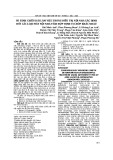
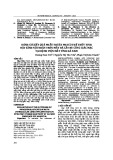

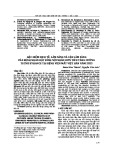
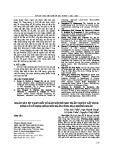

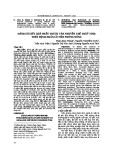
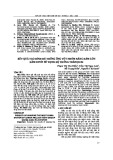


![Bài ôn tập Giải phẫu răng [chuẩn nhất]](https://cdn.tailieu.vn/images/document/thumbnail/2025/20251005/tuyetnhitk1305@gmail.com/135x160/78741759715471.jpg)





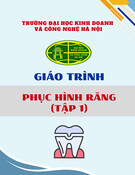
![Bài giảng Glass Ionomer Vương Lam Linh: Tổng hợp kiến thức [Mới nhất]](https://cdn.tailieu.vn/images/document/thumbnail/2025/20250908/dangkhoa5304@gmail.com/135x160/90151757385750.jpg)





